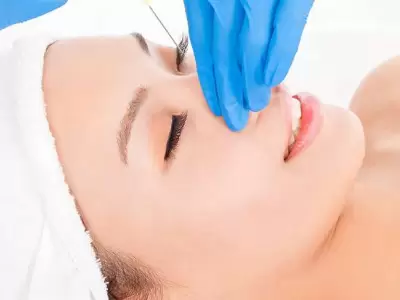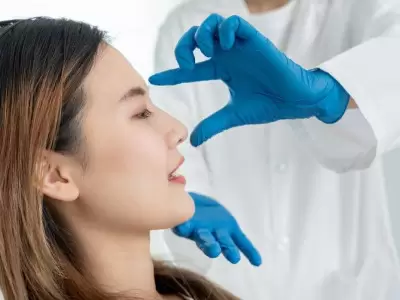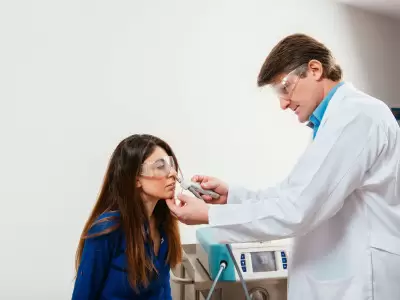Allergic Rhinitis
The condition in which allergy producing substances (allergens) contact nasal mucosa and manifests with complaints like watery discharge, itching of the nose and eyes, sneezing, itching of the throat is called allergic rhinitis.
The reason for the condition is the abnormal reaction developing in response to airborne particles that are inhaled through the nose. Hay fever, summer flu and rhinitis terms are also used as synonymous to allergic rhinitis.
The severity of allergic reactions formed in this disease varies individually; in some patients they can be mild and in some other patients they are severe enough to interfere with the performance of daily works and to affect their quality of life.
Allergic flu can be divided into two subgroups as Intermittent (seasonal) and persistent (perennial) according to the duration of the complaints, and also can be divided into three subgroups as mild, moderate and severe.
What is the Reason of Allergy?
Allergy is an excess reaction developed by the immune system by definition. Immune system develops a response against all foreign substances that enter our body. Under normal conditions, this is a natural protection. In addition, some people might develop a different immune response to certain substances and when these substances are encountered again, unexpected excessive reactions are seen. These substances are called allergens, and the people are called allergic. Allergy is a genetically inherited condition and if both parents are allergic, then their children have a 50% chance of having allergy.
Allergens stimulate the body to produce antibodies. These antibodies then combine with allergens and lead to the releasing of some chemical substances that induces undesired effects in the body (allergic reaction).
Histamine is one of the best known chemical substances among them. This substance causes the swelling of nasal mucosa, itching, irritation and excess defluxion.
Which Allergens Causes Rhinitis?
Animal and plant proteins that are small enough to be carried by the air accumulate on our eyes, nose and the mucus membranes in our throat. Pollens, fungi spores, animal hairs and house hold dusts are the most commonly encountered particles. In the early spring, pollens or trees that are commonly seen in the environment may cause allergic reactions. In the late spring, pollens come from meadows.
Ornamental plants with pollens heavy to be carried by air rarely lead to allergy. Pollens of these plants are carried around by insects. Some plants begin to produce pollens at the end of August. This continues all through September. Sometimes they continue to produce pollens till October or the first colds.
Fungi are mold that moulds bread and spoil fruits. In addition, they are found on dry leaves, meadows, hay, seeds and other plants and in the soil. Since they are resistant against cold, allergy problem lasts long and their spores are found in the air all yearlong except for the period when the soil is covered with snow. They live on the fungi and plants and on their potting soil in the house. In addition to being present in humid places like basements and laundry rooms, they are also found in cheese and fermented beverages.
How are the Yearlong Allergens Change?
Allergen animal residues, cosmetics, fungi, food and house dust can be found in the environment all year long. House dust is a complex structure formed of cellulose falling off the furniture, fungi, mites, residues falling of house pets and insect pieces. Allergy increases the effect of house dust when hot air systems of the houses start working in winter.
What are the Damages of Allergy?
The susceptibility of allergic people to common cold, sinusitis and otitis are also increased. This disease may disturb them more than the people without allergies. More severely, even asthma may develop in allergic people.
Nasal congestions caused by allergy may lead to apnea both during the day and during night while sleeping (sleep apnea) and result in secondary problems like insufficient oxygen intake, heart rhythm disorders, hypertension, and heart failure.
How to Approach the Allergic Patient?
All patients should undergo an extensive an ear, nose and throat examination. It should be determined whether an infection or an underlying structural disorder result in the complaint, or not. Appropriate treatment should be initiated if a problem like this is determined. After reviewing the history of the patient and performing an examination, patch tests or blood tests may be performed to determine the cause of the allergic reactio. These tests not only determine the cause of the allergy, but also identify the level of this allergy.
Different drug group are present for patients diagnosed with allergy. Treatment protocols may be applied according to the features of the patient, the findings of the examination and severity of the complaints.
Major drug groups that are used are; antihistaminics (suppresses allergic reactions), decongestants (decrease the edema in the nose), cell stabilizers (prevents the releasing of substances from the cells that may lead to allergy), cortisone (decreases reactions, may be used in the form of injection, tablets or spray) and vaccine (blocks the allergen before causing an allergy in the body, reduces the sensitivity to the allergen). When an allergen is detected by tests or patient history, in addition to medical treatment, environmental control consultancy directed to protection from these allergen substances should also be provided.
The order of approach that should be followed in the treatment of allergic rhinitis is as follows:
Interrupting the contact with allergens,
Medication,
Vaccine
Surgery: Surgery beneficial in decreasing the complaints of the patient especially with adenoid hypertrophy (in kids), polyp formations inside the nose, chronic sinusitis, septal deviations and turbinate hypertrophies.
Phototherapy (Rhinolight)
What is Phototherapy (Light Therapy - Rhinolight)?
Rhinolight or light therapy consists of state of the art technology of high intensity light having a specific content that is applied in the treatment of allergic rhinitis which is a non-microbial infection of the nose mucosa.
Light therapy, applied as sessions of a few minutes is a painless application and its positive effects start to be seen just after three to four treatments. In patients with both seasonal allergic rhinitis and at lasts all year long, all kinds of complaints like itching, defluxion, congestion, sneezing developing in the nose as response to allergy are successfully reduced or eliminated with light therapy.
Phototherapy may be applied to all patients with allergic rhinitis and is also preferred in certain patient groups like; • Patients having complaints related to allergic rhinitis that can not be controlled with nose sprays and oral allergy medications, • Patients whom cannot be administered standard treatments due to reasons like side effects, interaction with the medication of accompanying diseases and pregnancy, • Patients who do not want to receive long term medication.
In Rhinolight treatment applied as 6 or 8 sessions within two weeks, a mixture of lights of special wavelengths are used and no heat or pain sensation during the application that is performed through nostrils occurs (Figure 1). Since no permanent damage is formed in the tissue, it may be used in allergy patients without encountering a problem in the long term.
Figure1 . Rhinolight Application
More than 70% of the light administered with Rhinolight consist of visible light, 25% consists of ultraviolet A (UVA) and less than 5% consist of ultraviolet B (UVB).
Main effects produced by Rhinolight in the nose;
Inhibiting histamine release in the mucosa due to allergic reaction,
Preventing secretion of mast cells producing histamine,
Decrease in the amount of cells called T lymphocyte and eosinophile,
Decrease in the amount of substances in the nose secretions of the patient like eosinophile, ECP and interleukin-5 that increase in allergic reactions.
Light therapy application ways;
Rhinolight is applied as 6 sessions in patients with seasonal allergy and as 8 sessions in patients with allergy all year long. In seasonal allergy, while three consecutive treatments are applied in 2 weeks, after 3 treatments are applied in patients having all yearlong allergy in one week, a once a week treatment is applied for an additional 5 weeks.
Patients whom light therapy is contraindicated
In some patients diagnosed with allergic rhinitis, light therapy may not be expected; it may even have side effects. Patients whom Rhinolight is contraindicated in the treatment of allergy are;
Patient with severe nose deviations as the reason for not using standard therapies,
Patients with other acute viral or bacterial nose inflammations besides allergic rhinitis,
Patient s with tumors inside the nose or the nasal cavity,
Patients with severe drying off the nose and scabbing inside the nose,
Patients experiencing severe problems on the skin with light therapy directed to the skin.
Since sufficient clinical knowledge is not present in the usage of light therapy in children, Rhinolight application is not recommended for children under the age 14.
What are the Protection Methods in Allergy?
Ideally, living away from the cause of allergy may be preferred. Unfortunately, this ideal application can rarely be performed. However, some suggestions may be helpful.
Wearing a pollen mask while mowing grass or house cleaning.
Changing the filters of heating and ventilation systems once a month or starting to use an air cleaning device.
Closing the doors and window in periods when pollens are very abundant.
Not having plants and pets in the house.
Changing feather pillows, woolen blankets and feather beds with cotton or synthetic ones.
Using sufficient amounts of antihistaminics and decongestants when necessary.
Sleeping in a bed as the head lifted up.
Biding by general health rules, doing exercise every day, quitting smoking and staying away from other factors causing air pollution, having a balanced diet, cutting down carbohydrates and adding vitamins to the diet.(vit. c.)
Since the dry air of the house exacerbates the condition of many allergic people during the winter, using a humidifier especially in the winter may be beneficial. However, the propagation of fungi in the humidifier should be considered.






Comment
Your Contact Information will not be shared in any way. * Required Fields